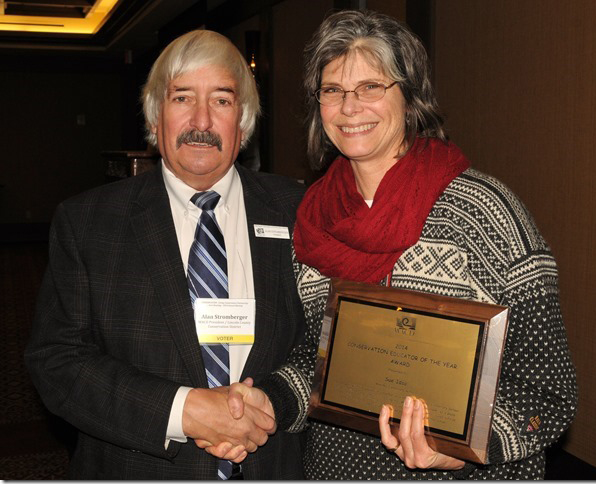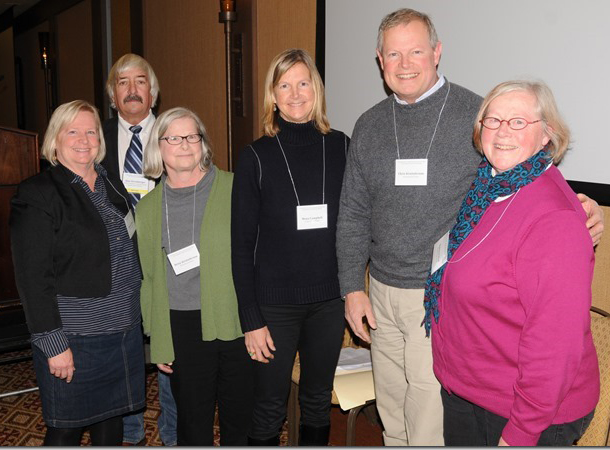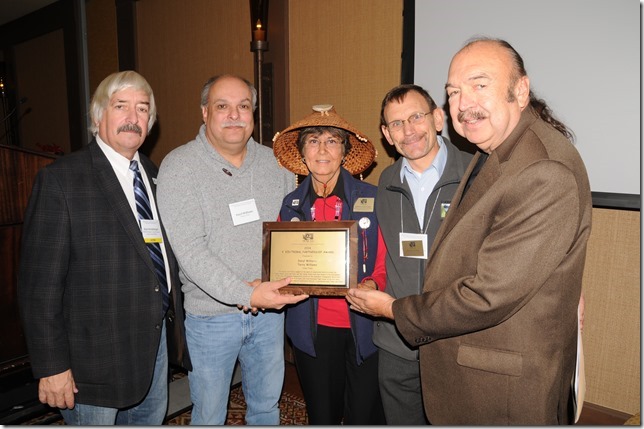Do you hear the fish jumping for joy? Kids splashing in the creek? Families laughing as they shovel into the sand after clams? Well, hopefully these sounds and sights will become more common in the future – if you’re near Woods Creek, Church Creek or South Skagit Flats.
The ink is still drying on three grant agreements awarded to the Snohomish Conservation District by the Washington State Department of Ecology. These grants will provide essential funding over the next two and a half years so the District can help landowners in Woods Creek (near Monroe) and Church Creek (near Stanwood) watersheds, and the South Skagit Flats (roughly the area north of Stanwood to the Snohomish County line between Skagit Bay and just east of I-5).
Cost-share funding is now available to eligible streamside property owners who want to better manage and contain livestock manure and reduce mud in their pastures by using compost bins and heavy use (sacrifice) areas. This funding will also help eligible streamside landowners plant native trees and shrubs along streams and build fences to keep livestock away from streams. All of these actions will help make Woods Creek, Church Creek and South Skagit Flats safer to play, swim, fish and clam in.
For qualified projects, a field crew is available to help landowners clear blackberry thickets and other non-native weeds along their streamside property, re-plant streambanks with native trees and shrubs, and install fencing as needed. The District will also host a series of workshops in these areas during the next two years to help landowners learn how they can best deal with common land management issues.
The goal of these grants is to reduce pollution in Woods Creek, Church Creek, and south Skagit Bay. Parts of Woods Creek get ‘summer fever’ every year, where the water temperature is too high for fish and other aquatic life to survive. When we get a fever, we can still breathe. But when a creek or river gets a ‘fever’ (any temperature above 61 degrees F), the amount of oxygen in the water decreases, so fish and other water creatures struggle to breathe and stay alive.
If that weren’t enough bad news, during certain times of the year the amount of fecal coliform bacteria in the stream (bacteria found in the poop of warm-blooded animals including humans, dogs, and farm animals) is so high the creek is considered unsafe for humans to swim in, drink, or pursue other recreational activities.
Church Creek and Skagit Bay have the same problem with high amounts of fecal coliform bacteria; during certain times of the year, bacteria levels that are high enough that the creek and bay are considered unsafe for swimming, drinking, and digging and eating shellfish. During the summer, levels of dissolved oxygen in parts of Church Creek are too low for fish and other aquatic critters to survive. In other words, they suffocate to death.
The good news is that over the past several years, many creeks and rivers in Snohomish County have gotten cleaner and cooler thanks to the hard work of many property owners, on-the-ground get-‘er-done organizations, and funders. The grants awarded to the District will help Snohomish County residents continue to make progress toward cleaning up local streams, rivers, Port Susan and Skagit bays, and Puget Sound — making these waters safer for humans, and cooler and healthier for the fish and other creatures that call them home.
By the end of 2016, landowners in the three project areas will have planted about 30 acres of native trees along streams, built several thousand feet of fences to keep livestock away from streams, and will have installed other best management practices on farms that keep bacteria and other pollutants out of the water.
In addition to the landowners who volunteer to complete these cost-share projects, several local partners will provide funding and labor, including the City of Stanwood, Snohomish County Surface Water Management, Washington Conservation Corps, Sound Salmon Solutions, and the Clean Water District Advisory Board (and its rate-payers).
If you’re interested in learning more about these kinds of projects or the cost-share funding available for streamside landowners in the Woods Creek, Church Creek and Skagit Bay areas, please contact Cindy Dittbrenner or Alex Pittman at 425-335-5634, ext 4 or email habitat(at)snohomishcd.org.








